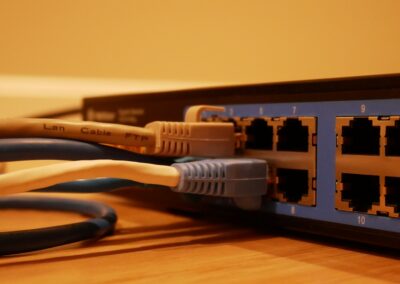How Edge Computing Reduces Network Costs and Drives Business Efficiency
This article explores the Cost-Effective Networking of edge computing and its applications in smart cities, industrial automation, and retail. Edge computing is revolutionizing networking in the GCC by reducing network costs and improving efficiency.
In today’s digital age, businesses across the Gulf Cooperation Council (GCC), including Saudi Arabia and the UAE, are increasingly reliant on robust networking infrastructure. However, the costs associated with traditional networking models, particularly those relying heavily on cloud computing, can be substantial. Enter edge computing, a paradigm shift in data processing that promises to significantly reduce network costs and boost efficiency.
Understanding Edge Computing and Its Cost-Saving Potential
Edge computing is a distributed computing paradigm that brings computation and data storage closer to the location where it is needed, as opposed to relying on a centralized cloud infrastructure. This localized approach offers numerous benefits, one of the most significant being a reduction in network costs. Let’s delve into how edge computing achieves this:
Reduced Data Transmission
By processing data at the edge, closer to the source, the need for transmitting vast amounts of data to and from a centralized cloud is minimized. This reduction in data transmission translates directly into lower bandwidth costs and a more efficient use of network resources.
Optimized Bandwidth Utilization
Edge computing enables businesses to prioritize the data that needs to be transmitted to the cloud, focusing on critical information and discarding irrelevant data. This optimization of bandwidth utilization further contributes to cost savings.
Lowered Cloud Storage Costs
Since less data is being sent to the cloud, the demand for cloud storage decreases, leading to substantial savings in cloud storage costs.
Realizing Cost Efficiency in the GCC
The GCC region, with its ambitious smart city initiatives and rapidly growing digital landscape, is primed to benefit significantly from edge computing’s cost-saving advantages. Businesses and governments alike can leverage this technology to build more efficient and cost-effective networking solutions.
Smart Cities and IoT
Edge computing plays a vital role in the development of smart cities, where a multitude of sensors and devices generate vast amounts of data. By processing this data locally, edge computing reduces the burden on network infrastructure, enabling cities to operate more efficiently and cost-effectively.
Industrial Automation
The oil and gas industry, a major economic driver in the GCC, is increasingly adopting automation technologies. Edge computing can enhance the efficiency of industrial automation systems by enabling real-time data processing and decision-making at the edge, reducing the need for expensive and time-consuming data transfers.
Retail and E-commerce
In the retail and e-commerce sectors, edge computing can enhance customer experiences by enabling faster website loading times, personalized recommendations, and real-time inventory management. This not only improves customer satisfaction but also contributes to cost savings through optimized operations.
Challenges and Future Directions
While the cost-saving potential of edge computing is undeniable, there are challenges to be addressed. These include ensuring robust security measures, managing the complexity of distributed computing environments, and integrating edge computing with existing cloud infrastructure.
Security
As edge computing involves distributed data processing, ensuring robust security measures is paramount. This includes protecting data at the edge, securing communication channels, and implementing comprehensive threat detection and prevention mechanisms.
Management Complexity
Edge computing introduces a level of complexity that requires careful planning and management. Businesses need to develop strategies for deploying, managing, and maintaining edge devices and infrastructure.
Integration with Cloud
To fully leverage the benefits of both edge and cloud computing, businesses need to develop a hybrid approach that seamlessly integrates the two. This involves determining which data should be processed at the edge and which should be sent to the cloud, as well as establishing efficient communication channels between the two.
Conclusion
Edge computing is a game-changer in the world of networking, offering a cost-effective alternative to traditional cloud-centric models. By reducing data transmission, optimizing bandwidth utilization, and lowering cloud storage costs, edge computing enables businesses in the GCC to build more efficient and affordable networking solutions. As the region continues to embrace digital transformation, edge computing will undoubtedly play a pivotal role in shaping its technological landscape.
Embracing the Future of Networking
In an era where data is the new oil, the ability to process and analyze data efficiently is crucial for business success. Edge computing provides a pathway to achieve this, enabling businesses to unlock the full potential of their data while keeping costs under control. By embracing edge computing, businesses in the GCC can not only reduce network costs but also gain a competitive edge in the digital marketplace.
A New Era of Efficiency
The convergence of edge computing with other emerging technologies like 5G and artificial intelligence (AI) is poised to usher in a new era of efficiency and innovation in networking. As businesses in the GCC continue to explore the possibilities of edge computing, they will discover new ways to streamline operations, enhance customer experiences, and drive growth. The future of networking is at the edge, and it is here to stay.
#edgecomputing #networkcosts #datatransmission #SaudiArabia #UAE #Riyadh #Dubai #technology #cloudcomputing #costreduction






















